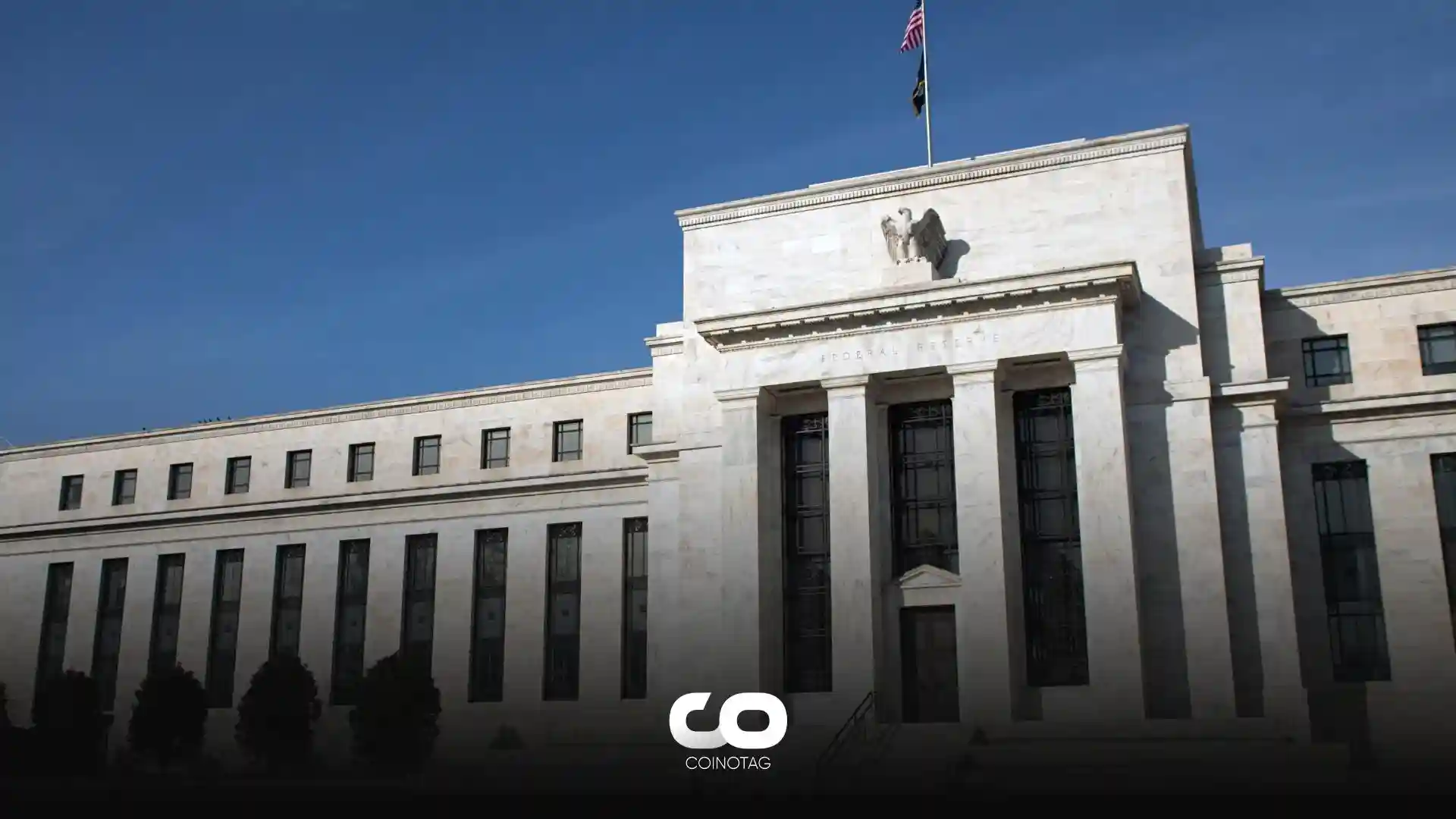| COINOTAG recommends • Exchange signup |
| 💹 Trade with pro tools |
| Fast execution, robust charts, clean risk controls. |
| 👉 Open account → |
| COINOTAG recommends • Exchange signup |
| 🚀 Smooth orders, clear control |
| Advanced order types and market depth in one view. |
| 👉 Create account → |
| COINOTAG recommends • Exchange signup |
| 📈 Clarity in volatile markets |
| Plan entries & exits, manage positions with discipline. |
| 👉 Sign up → |
| COINOTAG recommends • Exchange signup |
| ⚡ Speed, depth, reliability |
| Execute confidently when timing matters. |
| 👉 Open account → |
| COINOTAG recommends • Exchange signup |
| 🧭 A focused workflow for traders |
| Alerts, watchlists, and a repeatable process. |
| 👉 Get started → |
| COINOTAG recommends • Exchange signup |
| ✅ Data‑driven decisions |
| Focus on process—not noise. |
| 👉 Sign up → |
- Bitcoin and other cryptocurrencies experienced a decline on Thursday in line with the weakness in risk-sensitive assets following the Federal Reserve’s recent monetary policy decision.
- Cryptocurrencies reacted to the Fed’s latest move much like the stock market, including the Dow Jones Industrial Average and the S&P 500, but the decision to halt interest rate hikes was largely expected.
- Apart from Bitcoin, the second-largest cryptocurrency, Ethereum, dropped by 1.5% to $1,610. Smaller tokens or alternative cryptocurrencies also performed poorly.
Bitcoin and cryptocurrencies fell today after the FED decided to keep interest rates constant: Will the horizontal trend continue?
Bitcoin’s Price Not Affected by the Fed’s Interest Rate Decision

Bitcoin and other cryptocurrencies experienced a decline on Thursday in line with the weakness in risk-sensitive assets following the Federal Reserve’s recent monetary policy decision. Cryptocurrencies are preparing to return to a range-bound trading period that has defined the past few months.
Bitcoin’s price fell by about 1% in the last 24 hours, reaching approximately $26,730, and retreated from its peak of around $27,300 on Wednesday, likely signaling an expectation of further increases following the Fed’s indication that rates will likely be raised again.
| COINOTAG recommends • Professional traders group |
| 💎 Join a professional trading community |
| Work with senior traders, research‑backed setups, and risk‑first frameworks. |
| 👉 Join the group → |
| COINOTAG recommends • Professional traders group |
| 📊 Transparent performance, real process |
| Spot strategies with documented months of triple‑digit runs during strong trends; futures plans use defined R:R and sizing. |
| 👉 Get access → |
| COINOTAG recommends • Professional traders group |
| 🧭 Research → Plan → Execute |
| Daily levels, watchlists, and post‑trade reviews to build consistency. |
| 👉 Join now → |
| COINOTAG recommends • Professional traders group |
| 🛡️ Risk comes first |
| Sizing methods, invalidation rules, and R‑multiples baked into every plan. |
| 👉 Start today → |
| COINOTAG recommends • Professional traders group |
| 🧠 Learn the “why” behind each trade |
| Live breakdowns, playbooks, and framework‑first education. |
| 👉 Join the group → |
| COINOTAG recommends • Professional traders group |
| 🚀 Insider • APEX • INNER CIRCLE |
| Choose the depth you need—tools, coaching, and member rooms. |
| 👉 Explore tiers → |
The largest digital asset has thus returned to the range around $26,000, which has defined a period of stagnant activity for over a month. Historically low volatility and trading volume are contributing to the stagnation in the crypto markets.
Markus Levin, co-founder of the blockchain network XYO, stated, “I expect more sideways movement for Bitcoin and the rest of the market,” adding, “We will likely continue to see gradual accumulation, with dips being bought and rallies being short-lived.”
| COINOTAG recommends • Exchange signup |
| 📈 Clear interface, precise orders |
| Sharp entries & exits with actionable alerts. |
| 👉 Create free account → |
| COINOTAG recommends • Exchange signup |
| 🧠 Smarter tools. Better decisions. |
| Depth analytics and risk features in one view. |
| 👉 Sign up → |
| COINOTAG recommends • Exchange signup |
| 🎯 Take control of entries & exits |
| Set alerts, define stops, execute consistently. |
| 👉 Open account → |
| COINOTAG recommends • Exchange signup |
| 🛠️ From idea to execution |
| Turn setups into plans with practical order types. |
| 👉 Join now → |
| COINOTAG recommends • Exchange signup |
| 📋 Trade your plan |
| Watchlists and routing that support focus. |
| 👉 Get started → |
| COINOTAG recommends • Exchange signup |
| 📊 Precision without the noise |
| Data‑first workflows for active traders. |
| 👉 Sign up → |
Cryptocurrencies, like the stock market, reacted to the Fed’s latest move, but the decision to halt interest rate hikes was largely expected. The outlook for interest rates will continue to affect Bitcoin (higher yields on risk-free assets like cash or Treasury bonds provide less incentive for investors to take on riskier bets like cryptocurrencies), but the Fed’s next monetary policy decision won’t come until November.
During this time, investors should be prepared for more of the dull Bitcoin movements that have characterized the crypto market since the beginning of the summer.
| COINOTAG recommends • Traders club |
| ⚡ Futures with discipline |
| Defined R:R, pre‑set invalidation, execution checklists. |
| 👉 Join the club → |
| COINOTAG recommends • Traders club |
| 🎯 Spot strategies that compound |
| Momentum & accumulation frameworks managed with clear risk. |
| 👉 Get access → |
| COINOTAG recommends • Traders club |
| 🏛️ APEX tier for serious traders |
| Deep dives, analyst Q&A, and accountability sprints. |
| 👉 Explore APEX → |
| COINOTAG recommends • Traders club |
| 📈 Real‑time market structure |
| Key levels, liquidity zones, and actionable context. |
| 👉 Join now → |
| COINOTAG recommends • Traders club |
| 🔔 Smart alerts, not noise |
| Context‑rich notifications tied to plans and risk—never hype. |
| 👉 Get access → |
| COINOTAG recommends • Traders club |
| 🤝 Peer review & coaching |
| Hands‑on feedback that sharpens execution and risk control. |
| 👉 Join the club → |
Expectations Are Not Positive for Now
Levin continued, “I don’t think major rallies are in store for the overall digital asset market until a new catalyst comes along. Such a catalyst could be one or more factors, including the approval of one of the proposed spot Bitcoin ETFs or crypto exchange-traded funds considered by the SEC in the lower ranks or next year’s Bitcoin halving.”
Levin referred to crypto exchange-traded funds and the halving event, which would change Bitcoin’s supply dynamics, affecting supply and demand dynamics.
| COINOTAG recommends • Members‑only research |
| 📌 Curated setups, clearly explained |
| Entry, invalidation, targets, and R:R defined before execution. |
| 👉 Get access → |
| COINOTAG recommends • Members‑only research |
| 🧠 Data‑led decision making |
| Technical + flow + context synthesized into actionable plans. |
| 👉 Join now → |
| COINOTAG recommends • Members‑only research |
| 🧱 Consistency over hype |
| Repeatable rules, realistic expectations, and a calmer mindset. |
| 👉 Get access → |
| COINOTAG recommends • Members‑only research |
| 🕒 Patience is an edge |
| Wait for confirmation and manage risk with checklists. |
| 👉 Join now → |
| COINOTAG recommends • Members‑only research |
| 💼 Professional mentorship |
| Guidance from seasoned traders and structured feedback loops. |
| 👉 Get access → |
| COINOTAG recommends • Members‑only research |
| 🧮 Track • Review • Improve |
| Documented PnL tracking and post‑mortems to accelerate learning. |
| 👉 Join now → |








